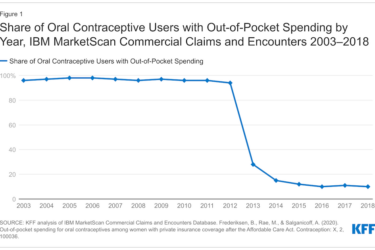
In August, we reported on two surveys of employers that showed a movement toward less comprehensive health insurance. More employers were offering high-deductible health plans (HDHPs), the surveys showed.
Then researchers in Medical Care and Health Affairs reported that men and people of low socioeconomic status enrolled in HDHPs tend to forego health care. In other words, the research published in both journals raised anew the question of whether less comprehensive coverage led to less medical care.
As Kathleen Phalen Tomaselli reported in American Medical News, “For men enrolled in high-deductible health insurance plans, serious events such as a kidney stone or chest pain might not be enough for them to seek emergency care, according to a study in the August issue of the journal Medical Care.” She noted that 34 percent of workers today have a deductible of $1,000 or higher.
Tomaselli also quoted the lead author of the Medical Care study, Katy B. Kozhimannil, Ph.D., assistant professor at the University of Minnesota School of Public Health, who said, “Men across the board had a reduction in emergency room visits and hospital care. The implication is men who transition to HDHPs may forgo needed care in the immediate term.”
Tomaselli added a caveat from Rick Madden, M.D., a member of the American Academy of Family Physicians board of trustees and a family physician in Belen, N.M.
“Maybe the patient went to their primary care doctor instead,” Madden said. “What we don’t know from the study is the cause and effect of the change. The confounding factor is, ‘Where did they go?’”
This issue gets to the heart of HDHPs: Do they cause some people to put off needed care?
The Health Affairs researchers went a bit further, saying they found HDHP members of low socioeconomic status had 25 percent to 30 percent reductions in high-severity emergency room visits over two years, and hospitalizations declined by 23 percent in the first year but rose again in the second year.
“Similar trends were not found among high-deductible plan members of high socioeconomic status,” they wrote. “Our findings suggest that plan members of low socioeconomic status at small firms responded inappropriately to high-deductible plans and that initial reductions in high-severity ER visits might have increased the need for subsequent hospitalizations.”
Perhaps employers and health plans need to identify HDHP members at risk of avoiding needed care and educate them about how these plans work, the authors recommended. They also suggested considering means-based deductibles.
As we reported here, the National Business Group on Health survey showed that the two most effective cost control strategies among its large employer members were HDHPs and increased employee cost-sharing. And just a week earlier we reported here that the Kaiser Family Foundation/Health Research & Educational Trust 2013 Employer Health Benefits Survey showed the trend to enroll employees in HDHPs is especially strong in smaller companies. In 2006, only 4 percent of all employees in employer-sponsored plans were in HDHPs, but this year, 20 percent of employees are in these plans, the Kaiser/HRET survey showed.
Drew Altman, Ph.D., the president and chief executive officer of Kaiser Family Foundation, called the movement toward HDHPs “part of a quiet revolution in health insurance as we move away from more comprehensive to less comprehensive health insurance with higher deductibles.”
For health care journalists, this is an issue worth following in the coming months and years as employers and health plans seek to attract employees and members to higher-deductible plans. It’s a potentially important story because as enrollment rises in these plans members may forego needed care. If so, will the cost savings evaporate?









